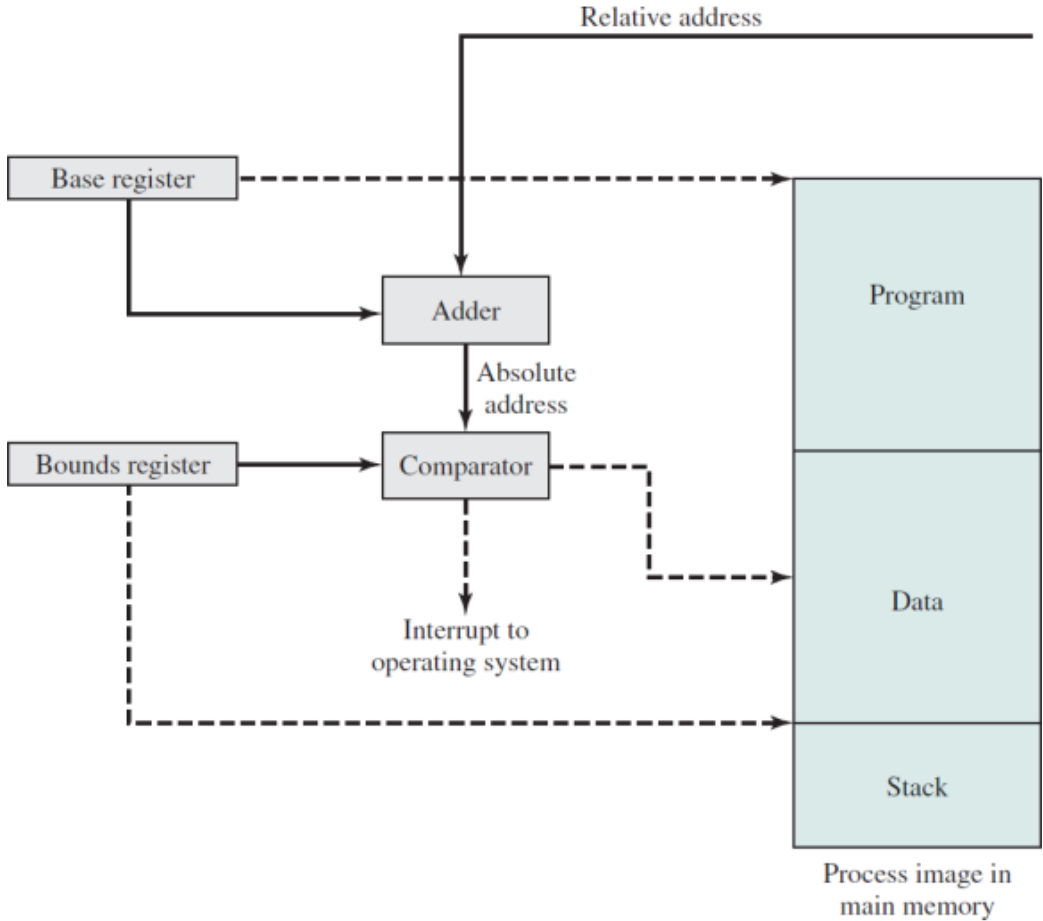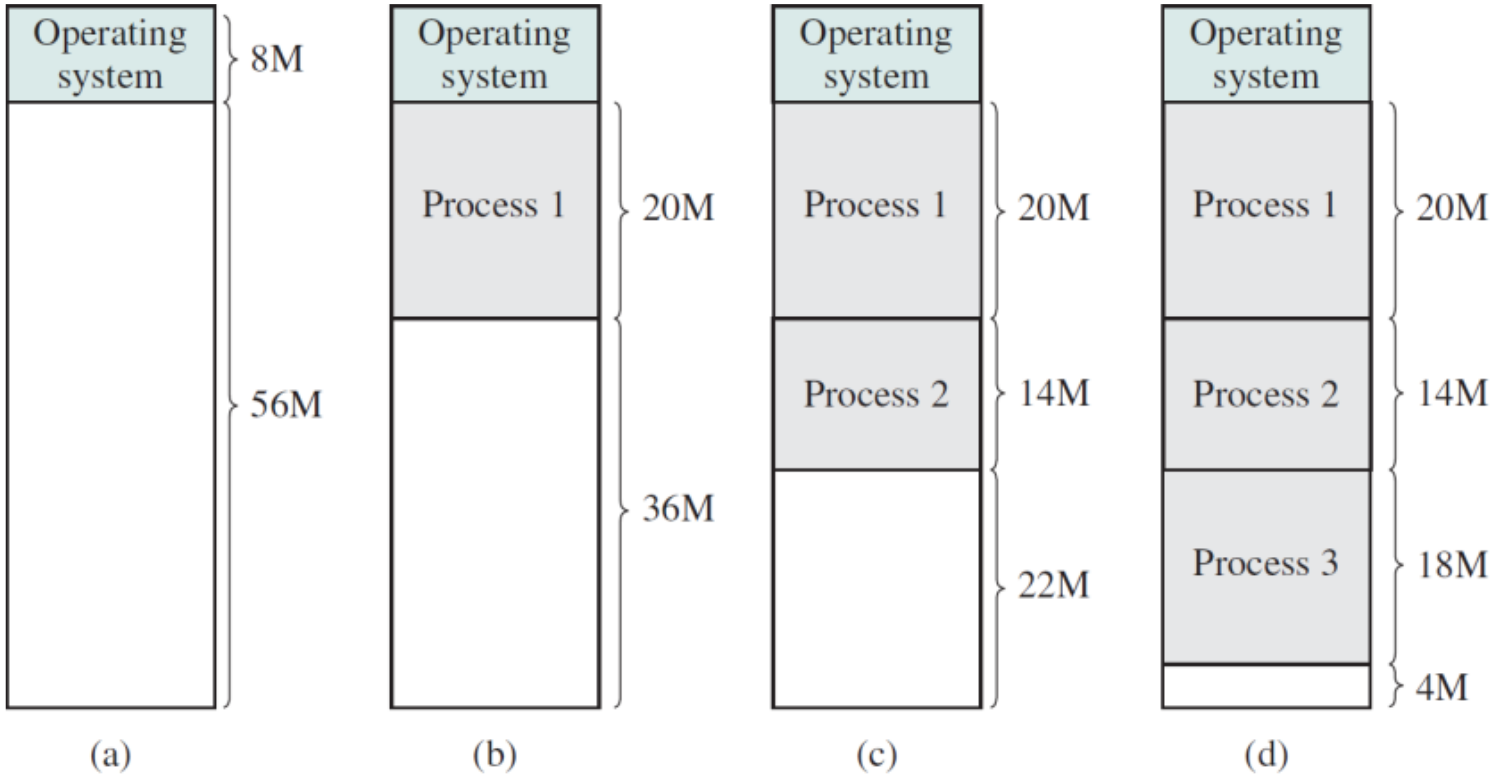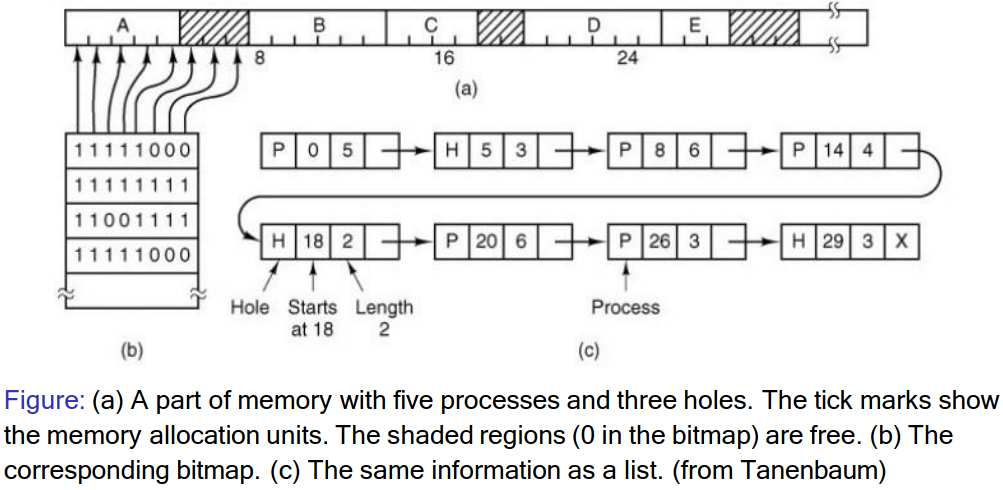13. Memory Management 2
04/11/22
Relocation and Protection
Principles
- Relocation: when a program is run, it does not know in advance which partition/addresses it will occupy
- The program cannot simply generate static addresses that are absolute
- Addresses should be relative to where the process has been loaded
- Relocation must be solved in an operating system that allows process to run a changing memory locations
- Protection: once you can have two programs in memory at the same time, protection must be enforced
Address Types
- A logical address is a memory address seen by the process
- It is independent of the current physical memory assignment
- Its relative to the start of the program
- Physical address refers to an actual location in main memory
- The logical address space must be mapped onto the machines physical address space
Approaches
- Static 'relocation' at compile time: a process has to be located at the same location every single time
- Dynamic relocation at load time
- Offset is added to every logical address to account for its physical location in memory
- Slows down the loading of a process, does not account for swapping
- Dynamic relocation at runtime
Base and Limit Registers
- Two special purpose registers are maintained in the CPU (the MMU), containing a base address and limit
- The base register stores the start address of the partition
- The limit register holds the size of the partition
- At runtime:
- The base register is added to the logical(relative) address to generate the physical address
- The resulting address is compared against the limit register
- This approach requires hardware support (was not always present in the early days!)

Dynamic Partitioning
- Fixed partitioning results in internal fragmentation (inside the blocks)
- An exact match between the requirements of the process and the available partitions may not exist
- The partition may not be used entirely
- Dynamic partitioning
- A variable number of partitions of which the size and starting address can change over time
- A process is allocated the exact amount of contiguous memory it requires, thereby preventing internal fragmentation
Swapping
- Swapping holds some of the process on the drive and shuttles processes between the drive and main memory as necessary
- Reasons for swapping:
- Some processes only run occasionally
- Have more processes than partitions
- A process's memory requirements have changed
- The total amount of memory that is required for the process exceeds the available memory
Difficulties
- The exact memory may not be known in advance (heat and stack grow dynamically)
- External fragmentation:
- Swapping a process out of memory will create 'a hole'
- A new process may not use the entire 'hole', leaving a small unused block
- A new process may be too large for a given a 'hole'
- The overhead of memory compaction to recover holes can be prohibitive and requires dynamic relocation
Allocation Structures
Bitmaps
- Simplest data structure that can be used in a form of bitmap
- Memory is split into blocks.(e.g 4kb size)
- To find a hole(128K) then a group of 32 adjacent bits set to 0 must be found, typically a long operation.
- Trade-off exists between the size of the bitmap and the size of blocks exists
- The size of bitmaps can become prohibitive for small blocks and may make searching the bitmap slower
- Larger blocks may increase internal fragmentation
- Bitmaps are rarely used for this reason
Linked List
- A more sophisticated data structure is required to deal with a variable number of free and used partitions
- Each link contains data items, e.g. start of memory block, size, free/allocated flag
- The allocation of processes to unused blocks become non-trivial

Summary
Internal fragmentation - Inside the blocks External fragmentation - outside the block